
|
melfa_robot repositorymelfa_description melfa_driver melfa_robot rv4fl_moveit_config rv7fl_moveit_config |
|
|
Repository Summary
| Description | |
| Checkout URI | https://github.com/tork-a/melfa_robot.git |
| VCS Type | git |
| VCS Version | master |
| Last Updated | 2019-02-26 |
| Dev Status | DEVELOPED |
| CI status | No Continuous Integration |
| Released | RELEASED |
| Tags | No category tags. |
| Contributing |
Help Wanted (0)
Good First Issues (0) Pull Requests to Review (0) |
Packages
| Name | Version |
|---|---|
| melfa_description | 0.0.4 |
| melfa_driver | 0.0.4 |
| melfa_robot | 0.0.4 |
| rv4fl_moveit_config | 0.0.4 |
| rv7fl_moveit_config | 0.0.4 |
README
melfa_robot 
This package is to control the MELFA’s robot arms using ROS.
Supported hardware
Robot controllers
Currently melfa_driver is checked with the following MELFA robot
controller.
 CR750-Q
CR750-Q
Robot arms
Currently melfa_description contains the models of following MELFA robots.
 RV4FL
RV4FL
 RV7FL
RV7FL
How to Install
Use apt to install the packages.
apt install ros-kinetic-melfa-robot
Quick start with the loop back node
melfa_driver/melfa_driver_node is the controller node, providing
hardware_interface::RobotHW. This controller communicates with the
actual robot controller, or the simulator named RT Toolbox3 on
Windows via Ethernet(TCP/IP).
In case that you don’t have both of the controller and simulator, the
package contains the loop-back(dummy) node mimicking the robot
controller. It is melfa_driver/melfa_loopback_node. This node set
the current joint angle identical to commanded value, and return them
as current state.
When you want to use the loopback node, launch the system as:
$ roslaunch melfa_driver melfa_driver.launch loopback:=true
Go to the section to check it works.
Quick start with the RT ToolBox3
If you have RT ToolBox 3, the optional software of MELFA robot, you
can use this package with it in the simulation mode.
You have to place your ROS PC and RT ToolBox3 (Windows) PC in the same network.
Run RT ToolBox3
Bring up the RT Toolbox3 by double clicking. You would see the screen like this:
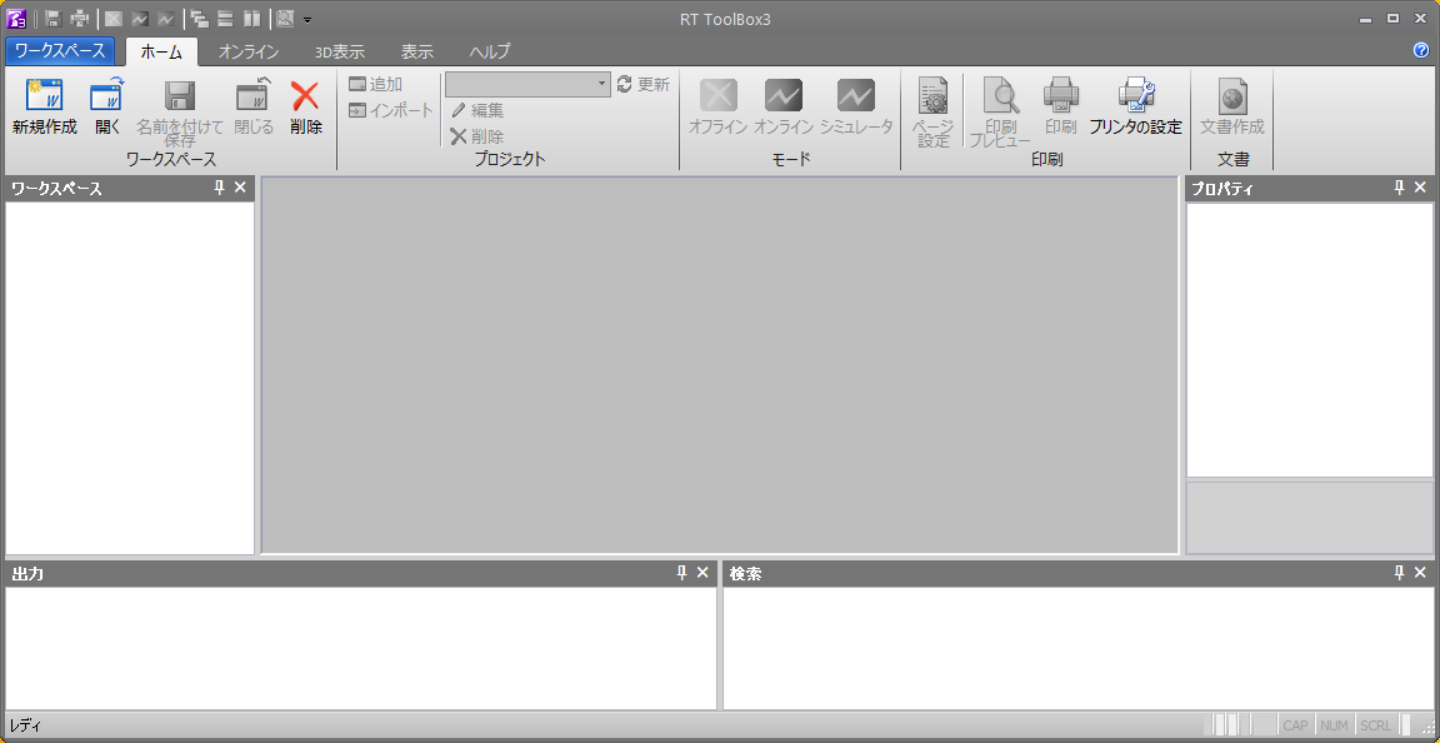
Create a new project file (need only once)
By pressing New button to create a new project file. In the
following wizard screen, push Next.
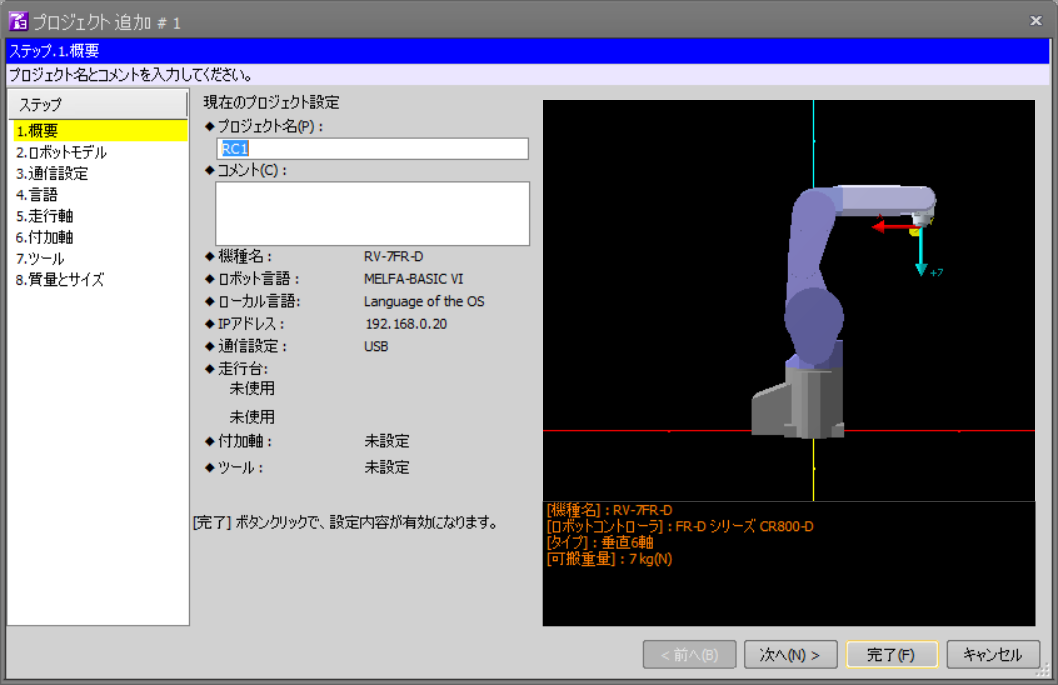
In 2. Robot Model, choose your robot. In this case, we choose FD
Series CR750-D and RV-7FL-D. Push Next button.
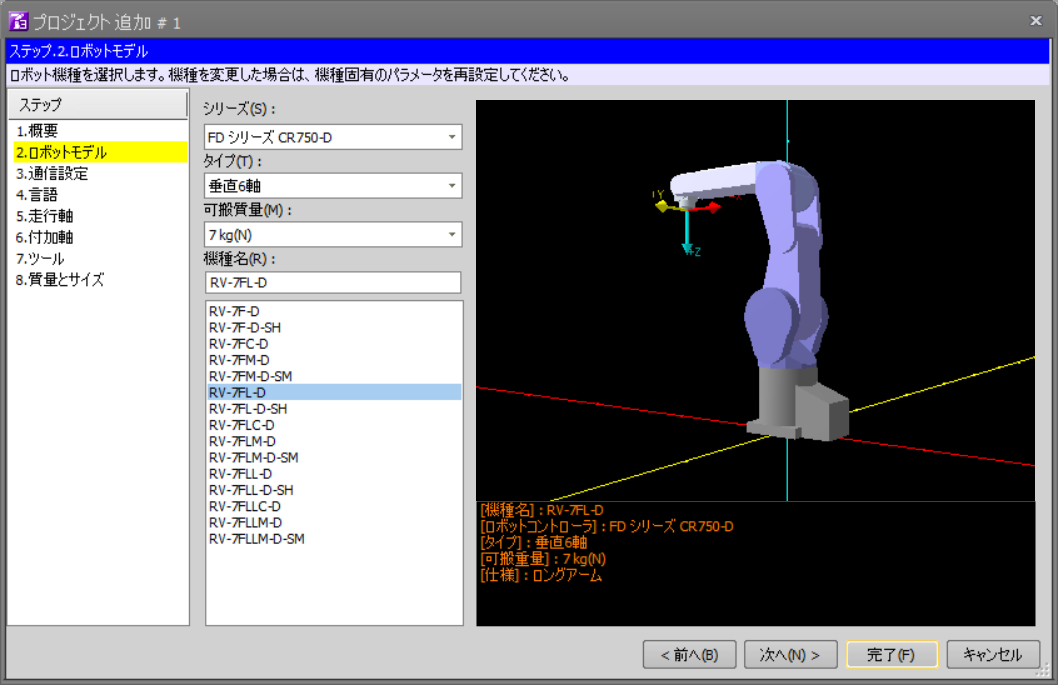
In 3. Communication, enter the IP address and gateway address of the
Windows PC. Just using Copy the setting of this machine will
work. In this example, 192.168.0.23 is the address of the Windows
PC.
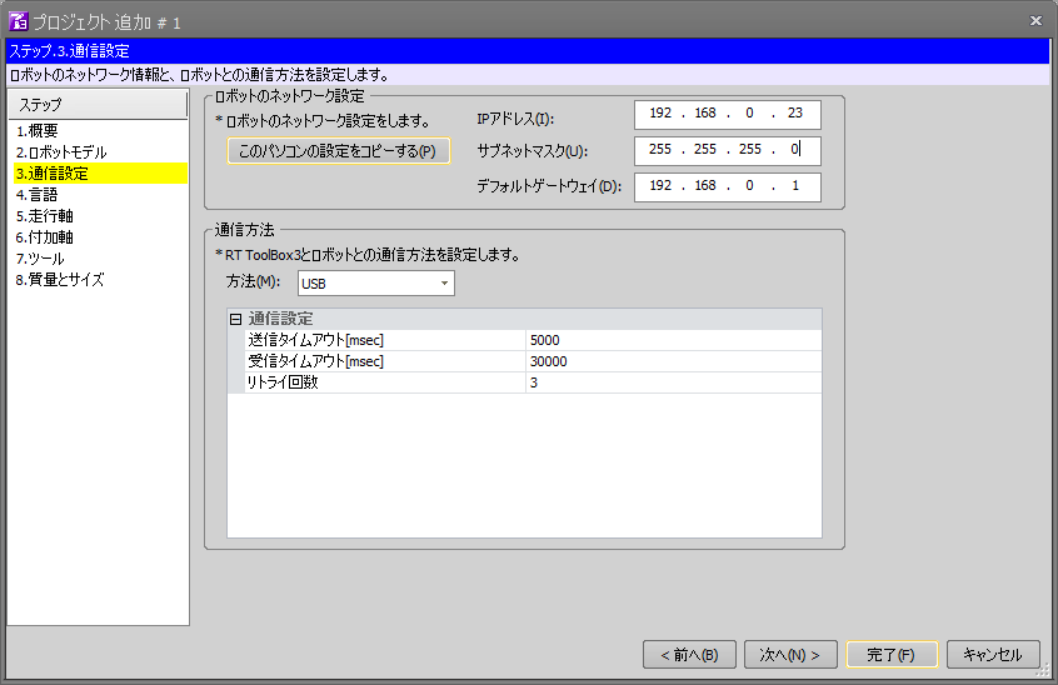
Program for real-time external control
The ROS package expects the controller is running in Real time
external control mode, which receive the continuous TCP/IP packet
from external machine. You have to create a program file in the
Program folder in the Workspace.
Open "ENET:192.168.0.12" As #1
Mxt 1,1
End
In this example, 192.168.0.12 is the IP address of ROS PC. Make sure
it is correct, or the controller cannot receive the packet.
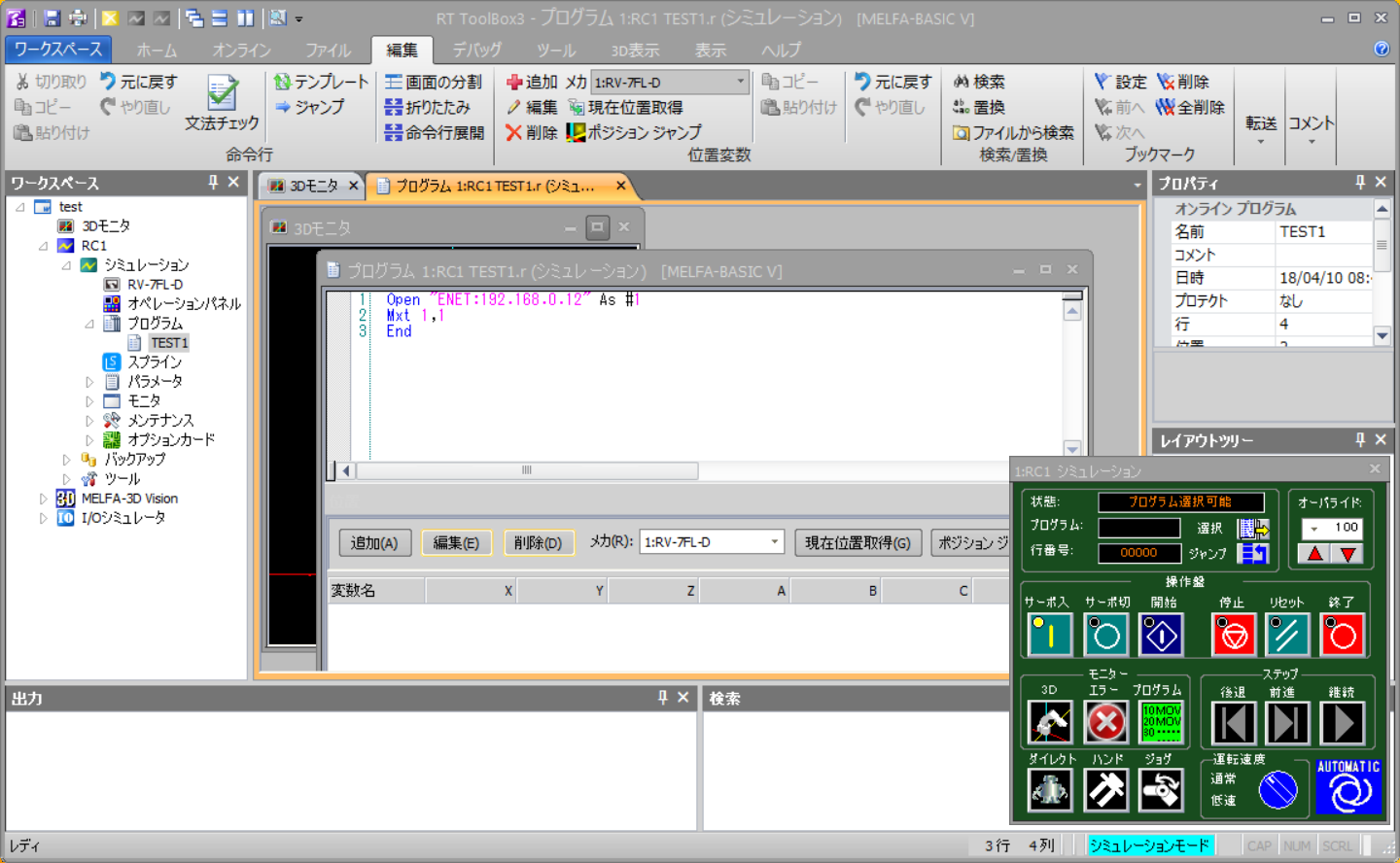
Switch to the simulation mode
Push Simulation button under Home tab to switch into the
simulation mode. You would see your robot model and the controller
panel on the screen.
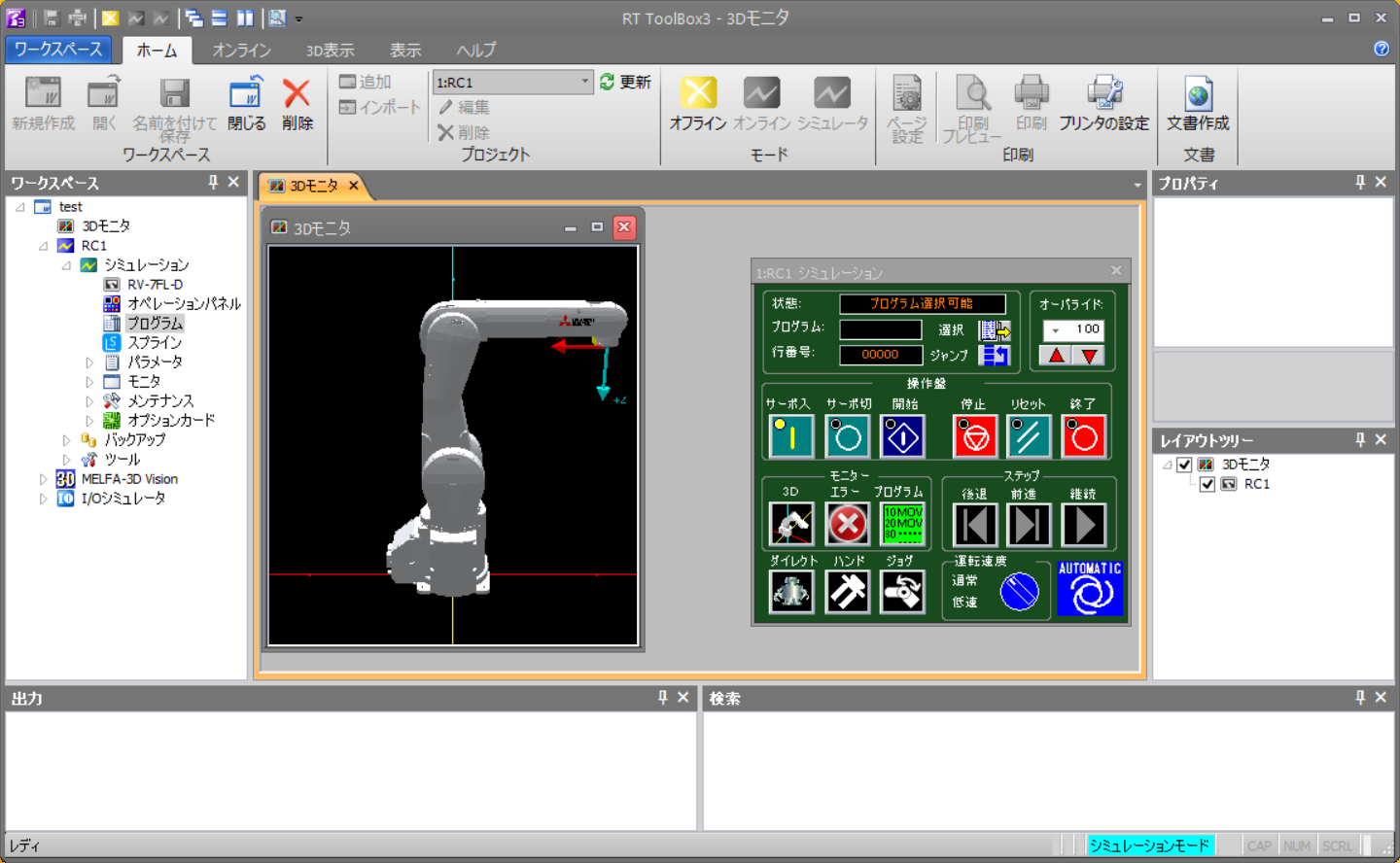
Run the program
Push the Select button on the right side of Program: to select the
program file name which we formally created.
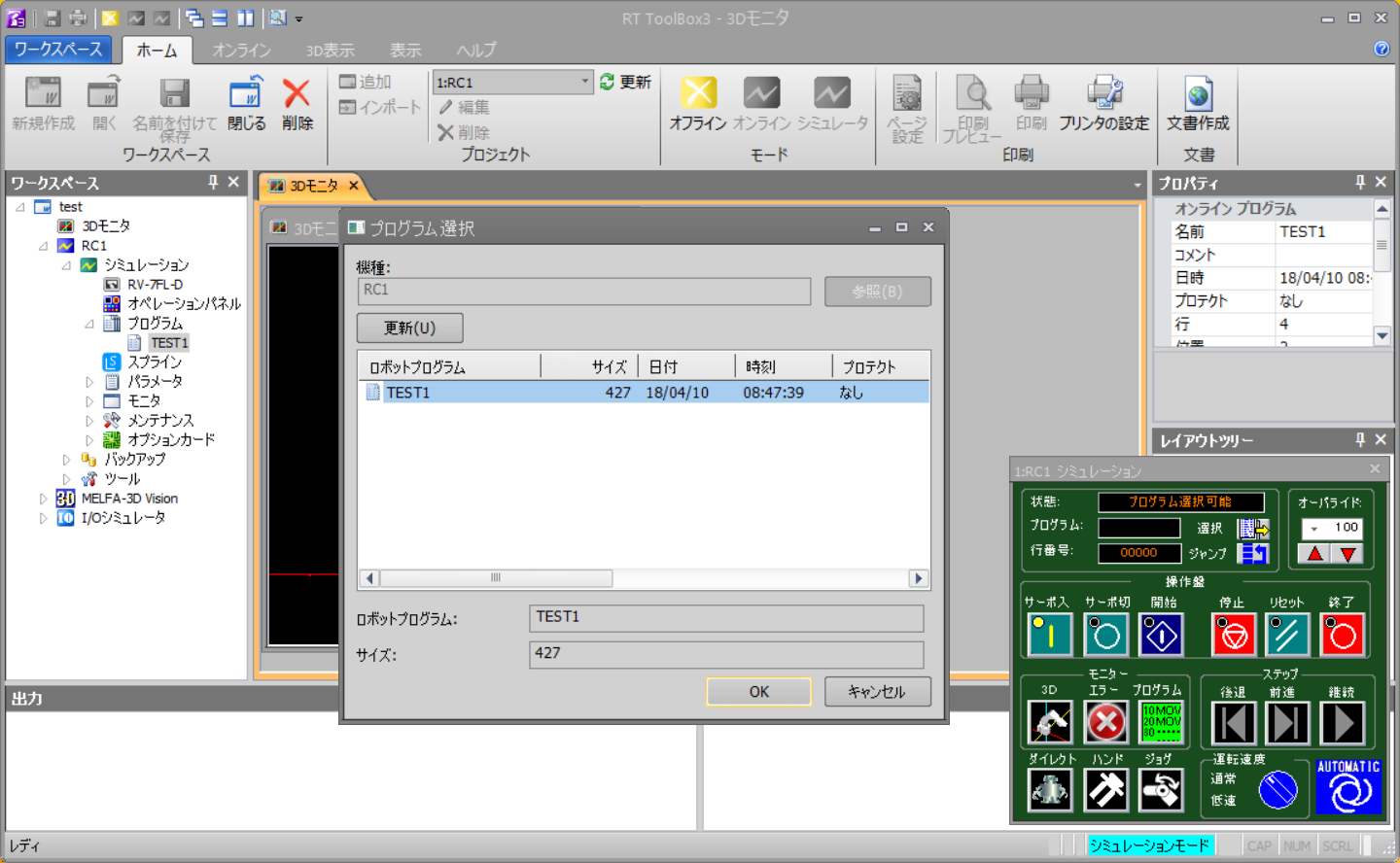
Push the Run button on the controller panel.
Start ROS Controller
Now bring up the ROS controller node with the launch file. robot_ip
parameter should be the address of the PC on which the simulator is
running.
$ roslaunch melfa_driver melfa_driver.launch \
robot_ip:=192.168.0.23 --screen
Go to the section to check it works.
Quick start with actual robot controller
The actual robot should work as same as the simulator… but BE CAREFUL!! The robot will move out of your intention. It may collide with the environment or human beings. Please make sure you can do experiments safely with your robot.
You have to place your ROS PC and the controller in the same network.
Program for real time external control
You need the program for real time external control as same as in the simulator. Create the following program with the pendant (or just transfer the file from RT Toolbox3).
Ovrd 10
Open "ENET:192.168.0.12" As #1
Mxt 1,1
End
Ovrd 10 is limiting the joint velocity for safety. In this example,
192.168.0.12 is the IP address of ROS PC. Make sure it is correct,
or the controller cannot receive the packet.
Check the IP address of the controller to use it afterwards.
Run the program
Run the program with the pendant. It will be same as usual usage.
Start ROS Controller
Now bring up the ROS controller node with the launch file. robot_ip
parameter should be the address of the robot controller.
$ roslaunch melfa_driver melfa_driver.launch \
robot_ip:=192.168.0.23 --screen
Go to the section to check it works.
Check the system works
Once the system is brought up, the way to command the robot is same in the either way.
If you don’t have the view of the robot model in Rviz and you want it, launch rviz as:
$ roslaunch melfa_description rviz.launch use_gui:=false
With rqt plugin
You can use rqt plug-in JointTrajctoryController to control the
robot joint angle using slider GUI.
$ rqt -s rqt_joint_trajectory_controller/JointTrajectoryController
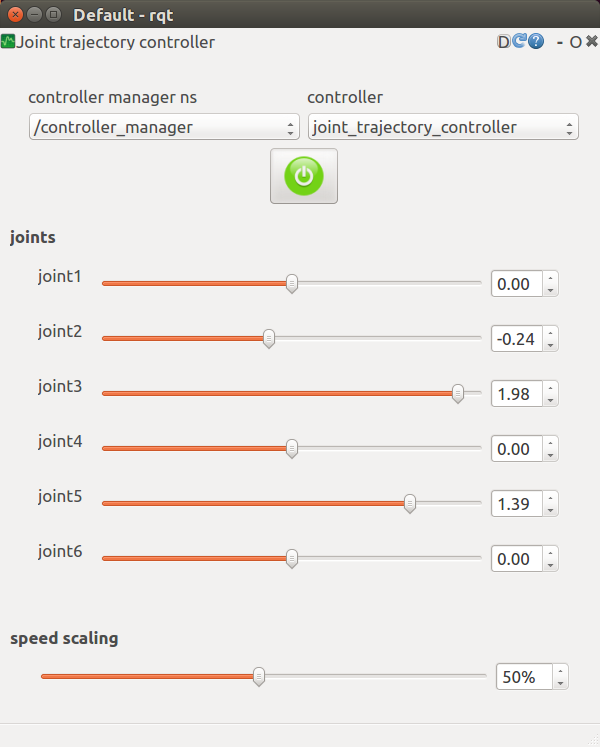 rqt_joint_trajectory_controller
rqt_joint_trajectory_controller
MoveIt!
You can try MoveIt! Rviz plug-in.
$ roslaunch rv7fl_moveit_config moveit_planning_execution.launch
Currently there are moveit_config packages for the following robot.
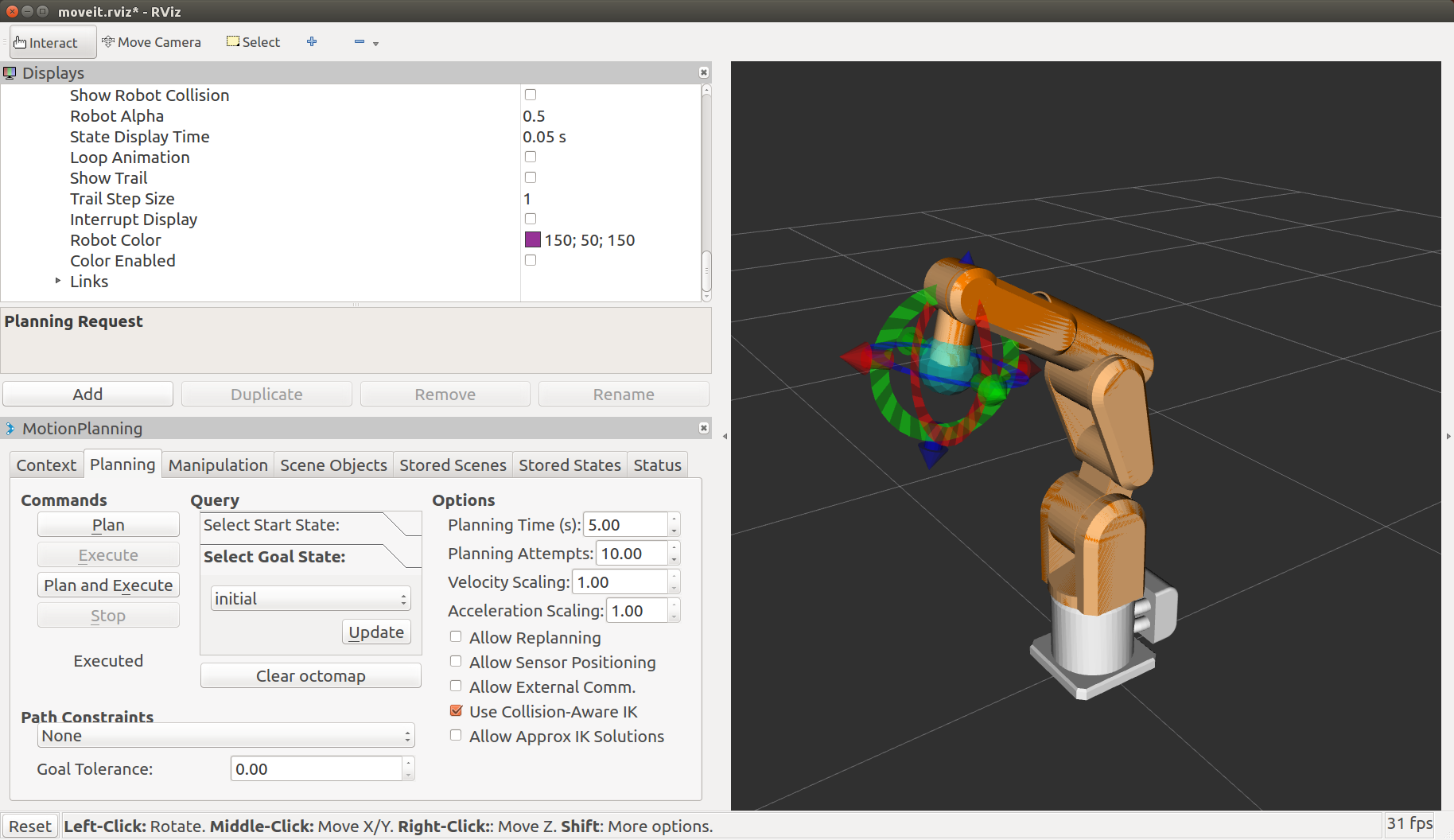 RV4FL
RV4FL
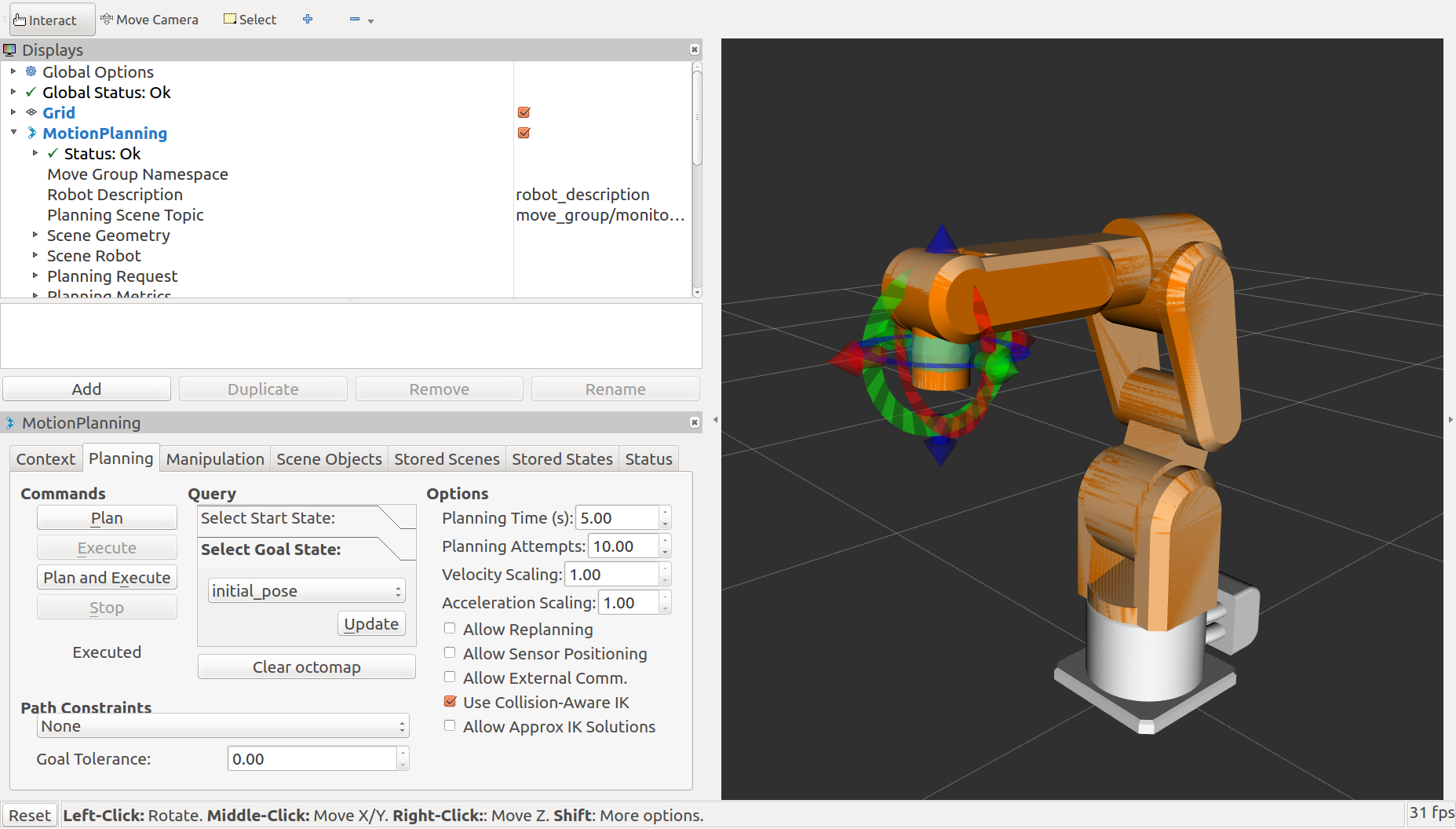 RV7FL
RV7FL
License
-
YOODS Inc. holds the copyright of all
mesh files in
melfa_description/meshdirectory which are licensed under a Creative Commons Attribution-ShareAlike 4.0 International License. - These MoveIt! configuration packages are licensed under BSD License,
which are basically auto generated by MoveIt! setup assistant
package.
rv4fl_moveit_configrv7fl_moveit_config
- Other parts are licensed under Apache License 2.0.